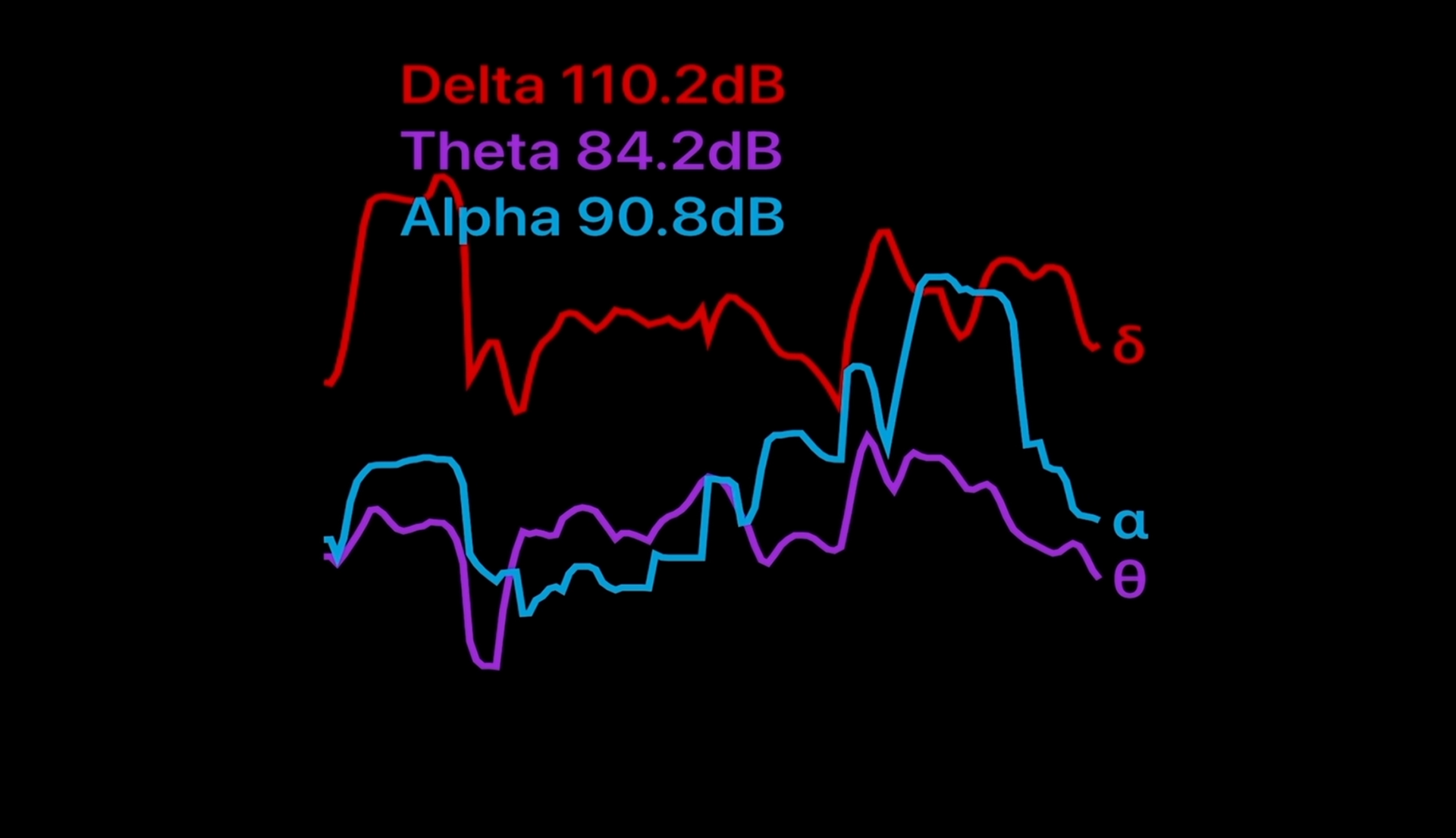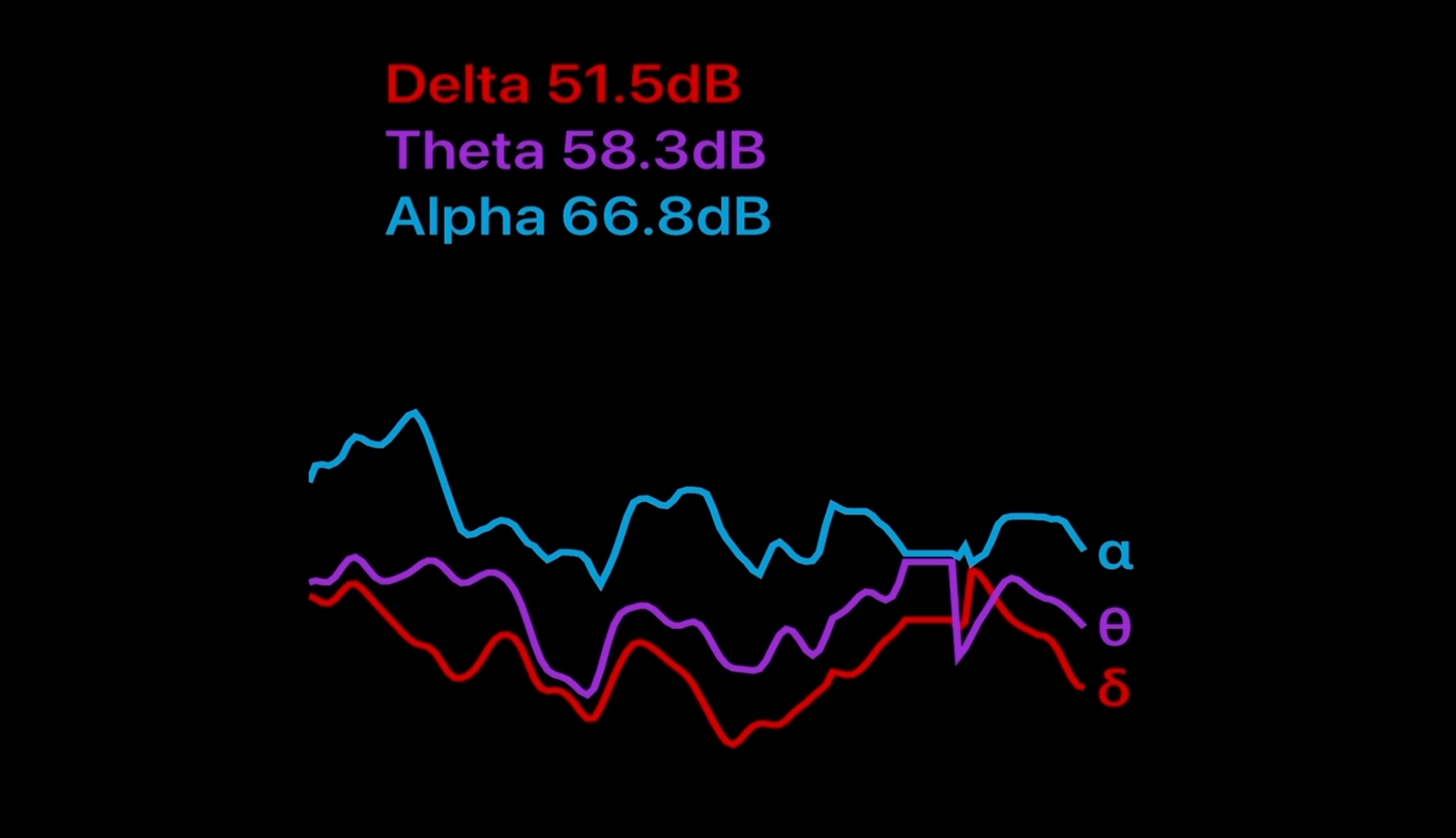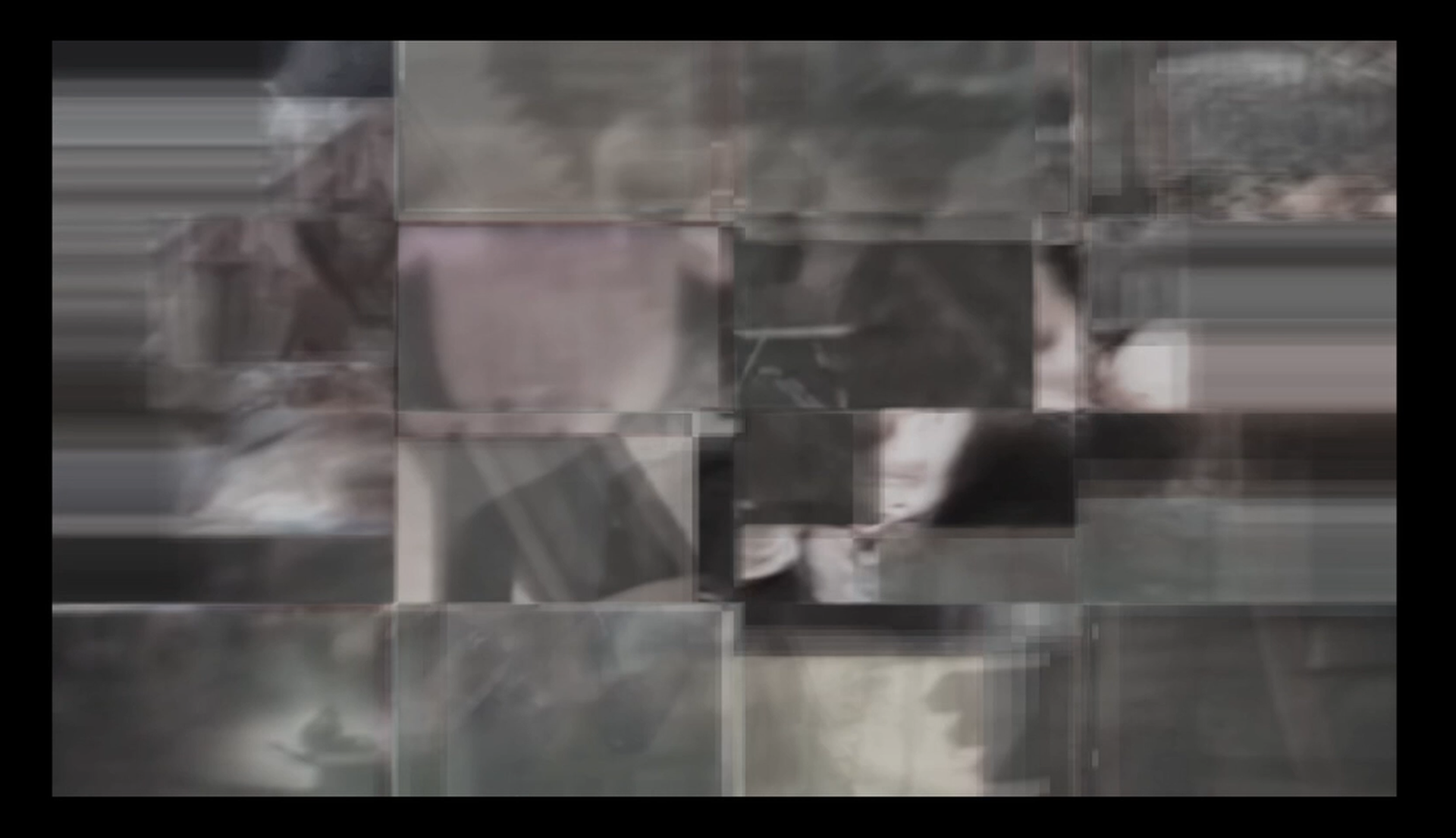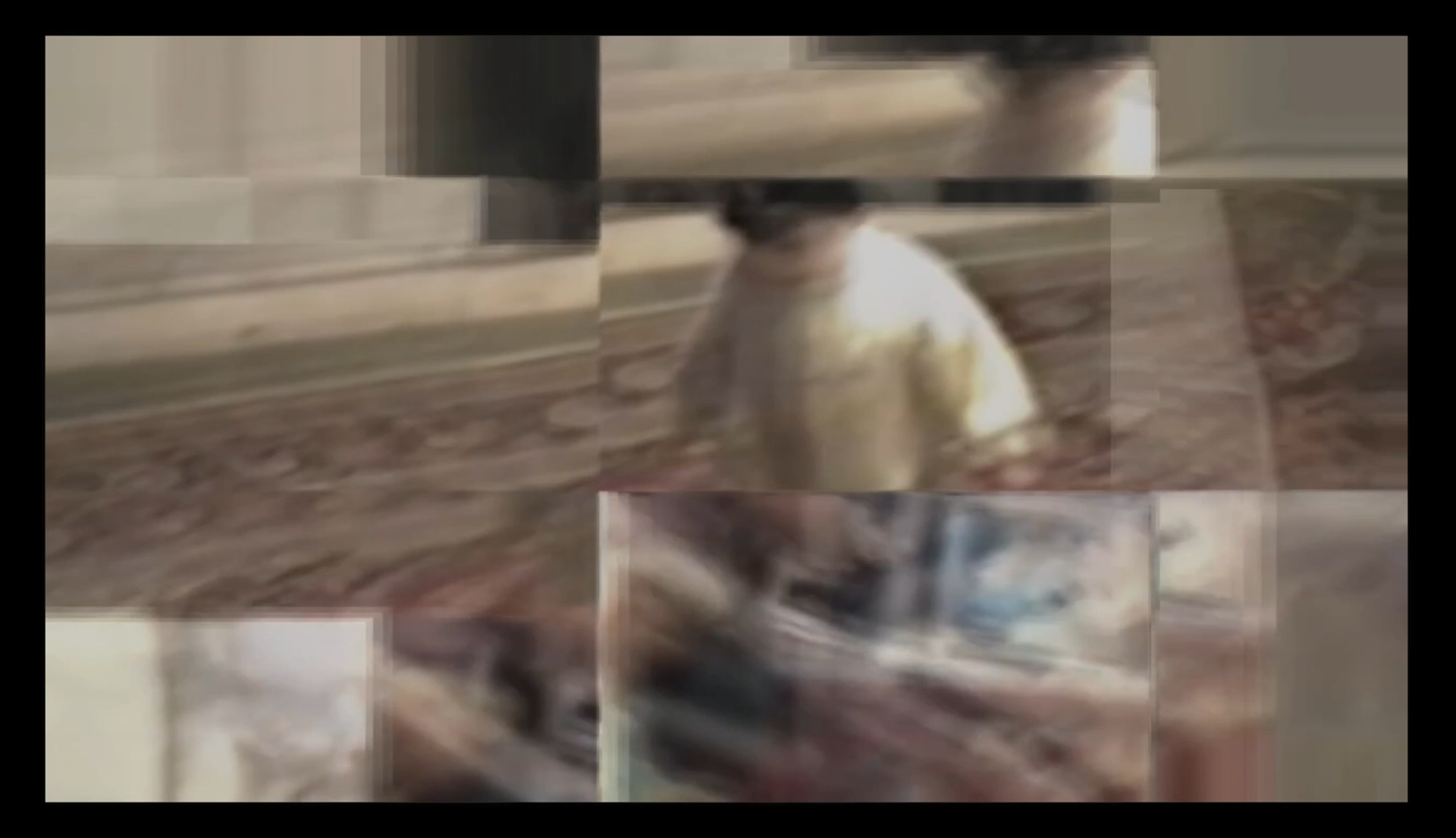2024
Multichannel Generative Video Installation + EEG
Exhibited as part of the Worlds Amongst Us group exhibition
Audain Gallery, Vancouver, BC
Multichannel Generative Video Installation + EEG
Exhibited as part of the Worlds Amongst Us group exhibition
Audain Gallery, Vancouver, BC
A Recollection of the Disappeared is a multichannel generative video installation that visualizes the artist’s sleeping states. The video draws from 75 VHS recordings of the artist’s childhood (1996–2006), used as a memory archive and embedded into a glitch network. This network is manipulated in real time by brainwave data captured through an EEG device. As the artist sleeps, the EEG transmits data to a generative system: dream-associated activity produces clearer images, while non-dreaming states result in pixelation. The video presents unedited snippets from three stages of sleep—Falling Asleep, REM, and Non-REM.
The work straddles scientific experiment and artistic exploration. At its foundation lies the precision of the designed system: its status as artwork is contingent on the system’s proper function. Yet it also emerges as an intermedial work, moving between digital and post-digital realms. Glitch here is not a technological disturbance but a central narrative device, functioning as a binary indicator of dreaming. By embracing the aesthetics of failure, the work interrogates the unstable and unreliable processes of memory, particularly as it pertains to dreaming. It thereby shifts from representation to phenomenology, delving into remembering and nostalgia as experiences inherently entangled with distortion and unreliability.
This ethos aligns with glitch art, where errors are reimagined as opportunities for narrative and aesthetic innovation. The work constructs a reflective dialogue between technology and cognition, chaos and order. In this sense, it resonates with Rosa Menkman’s Glitch Studies Manifesto (2010), which frames glitch as both aesthetic and avant-garde strategy. Menkman emphasizes that glitch exposes the “imperfections of new technology” while revealing new opportunities. In doing so, the installation leverages noise not as chaos but as a conductor of meaning.
As Menkman notes, glitch art “relays the membrane of the normal” to establish new protocols after shattering old ones. A glitch, once understood as a new representational language, ceases to be error and becomes form. A Recollection of the Disappeared embodies this tipping point. By functionalizing glitch as a narrative device, the work destabilizes familiar digital aesthetics to provoke new modes of awareness. The paradox of imposing order within chaos mirrors neurological processes of dreaming, where clarity and distortion intertwine.
It felt only fitting that the unconscious mind responsible for forgetting these memories would be the one to bring them back to life. The work was designed to induce, albeit artificially and symbolically, these memory blocks back into a “living” network unobstructed by conscious decision-making. The objective was to recycle these long-lost memories into an autobiographical artwork through human-machine collaboration. I acquired an EEG (electroencephalography) headband to record the activity of my unconscious mind during sleep. I then isolated three of the recorded brainwaves — Delta, Alpha, and Theta — to use as the driving parameters for the generative memory network.
It felt only fitting that the unconscious mind responsible for forgetting these memories would be the one to bring them back to life. The work was designed to induce, albeit artificially and symbolically, these memory blocks back into a “living” network unobstructed by conscious decision-making. The objective was to recycle these long-lost memories into an autobiographical artwork through human-machine collaboration. I acquired an EEG (electroencephalography) headband to record the activity of my unconscious mind during sleep. I then isolated three of the recorded brainwaves — Delta, Alpha, and Theta — to use as the driving parameters for the generative memory network.
Ultimately, the installation transforms technological flaws into meditations on memory, nostalgia, and dreaming. It demonstrates how destruction can generate new meaning, affirming glitch not as failure, but as progress.
Three channels of the video installation. From right to left: Video of the artist sleeping, real-time brainwave data, generative video (dream spotter)






On the left:
Delta (deep sleep) is peaking and Alpha becomes noticeably more volatile while dreaming (REM). These parameters change the behavior of the system, dissolving the glitch network and allowing for the emergence of the videos. Delta and Alpha control the glitch amount and the video shuffle speed respectively. This experiment was executed four times, spanning over a 5-6 hour sleep cycle. The dreaming window ranged between 13-27 minutes within the cycle.
On the right:
On the right:
The artist is falling asleep, Delta waves are considerably lower in activity while alpha rises in intensity and fluctuates spontaneously. During this time, as well as during Non-REM, the glitch network powers up, becoming more volatile and creating chaos in the videos.
